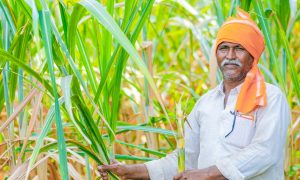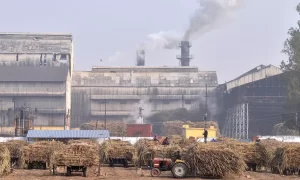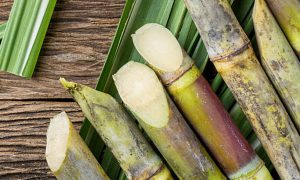Sugarcane industry upbeat on improved yields

Tariro Stacey Gatsi
ALTHOUGH farmers must remain vigilant to identify potential yellow sugarcane aphid (YSA) outbreaks, the sugarcane industry is expecting better fortunes this season after recording low infestation levels of the pest, thanks to timely interventions by growers to suppress it.Yellow sugarcane aphids’ infestations peak from October to April.Zimbabwe Sugar Association Experiment Station (ZSAES) senior Entomologist Ms Concilia Mukanga said the level of infestation this year was low as farmers were closely monitoring their fields and implementing timely interventions to minimise the damage to sugar cane crops.
“YSA have a devastating effect on young cane plants while harm is minimal on older plants. Our organisation carries assessments, tests chemicals and recommends the applicable ones,” said Ms Mukanga.
Initial infestations may appear insignificant but the reproductive capabilities of YSA can lead to exponential growth and rapid spread throughout entire farms.
Ms Mukunga further emphasised that in the 2019/20 season, losses were estimated at 7, 2 percent, followed by 5, 1 percent in 2021/22 and 8, 2 percent in 2022/23 whereas this year losses are relatively low.
Controlling YSA infestations in the early stages is essential before populations become difficult to manage.
“Crop stress caused by factors such as water scarcity, nutrient deficiencies, salinity and weed pressure can make sugarcane more susceptible to YSA attacks. Therefore, managing fields to minimise stress is vital in reducing vulnerability to infestations,” said Ms Mukunga.
Among the chemicals recommended to control the pest are Allice and Actara.
“We encourage farmers to make sure their fields and surrounding areas are free from weeds so that the pest does not find a habitat to escape to when the fields are sprayed. We also urge farmers to coordinate and spray their fields at the same time so that the pests do not find a safer habitat. Mixing of crops also causes the pest infestation to increase,” added Ms Mukanga.
The situation is, however, different in Mkwasine were farmers are battling to contain an outbreak of YSA, which they feel will ruin their potential yields.
Hippo Valley Productive Sugarcane Farmers Association (HVPSFA) chairman Mr Patrick Muvingi said the situation in Mkwasine was very bad as the YSA account for a 10 to 15 percent decline in yields.
“The aphid infestation started manifesting three to five years ago but on a small-scale with the levels of invasion expanding this year. If not controlled holistically, yellow aphids’ infestations can be disastrous in the same manner the fall armyworm ravages maize,” he said Mr Muvingi said the expenses incurred in managing the infestations, including the purchase of insecticides and hiring labour for spraying had added further strain to their already challenging circumstances.
“Farmers can treat their fields with Dimethoate or Allice, but the challenge is these chemicals are expensive for the ordinary farmer,” added Mr Muvungi.
A1 farmer, Mr Blessing Mahwerera spoke about the extent to which YSA had damaged his sugarcane in Mkwasine and other surrounding areas.
“So far Mkwasine is the hardest hit by YSA and it’s devastating to see our hard work being destroyed by these aphids. We were expecting a good harvest this season, but the YSA infestations have shattered our hopes,” he lamented.
Mr Mahwerera pleaded with Government to provide support and resources to help them combat YSA infestations effectively.
“We need assistance from the Government to overcome this crisis by providing us with machinery to use so that, as farmers, we can focus on buying the spraying chemicals,” added Mr Mahwerera.
Source Link: https://www.herald.co.zw/sugarcane-industry-upbeat-on-improved-yields/#
















